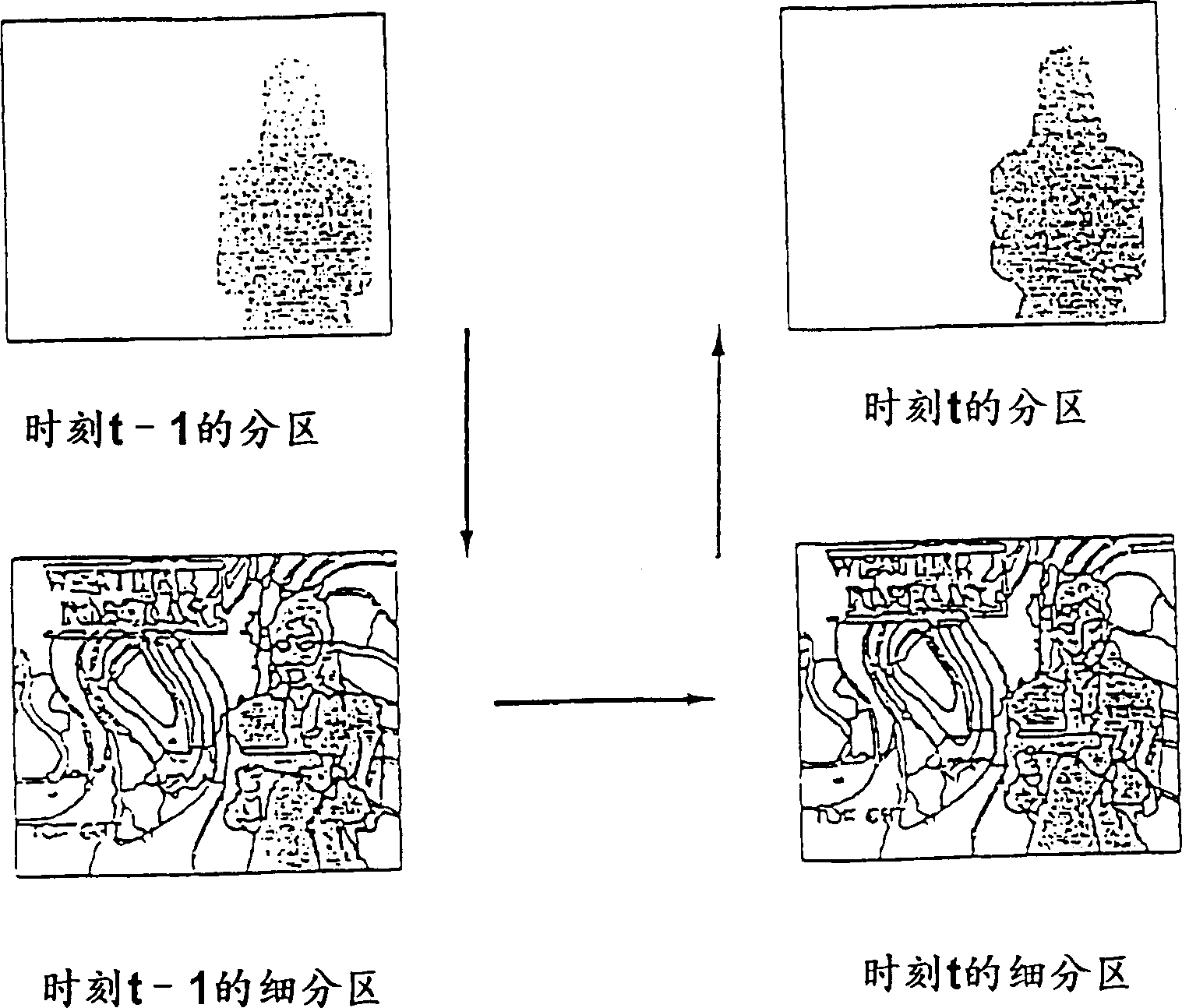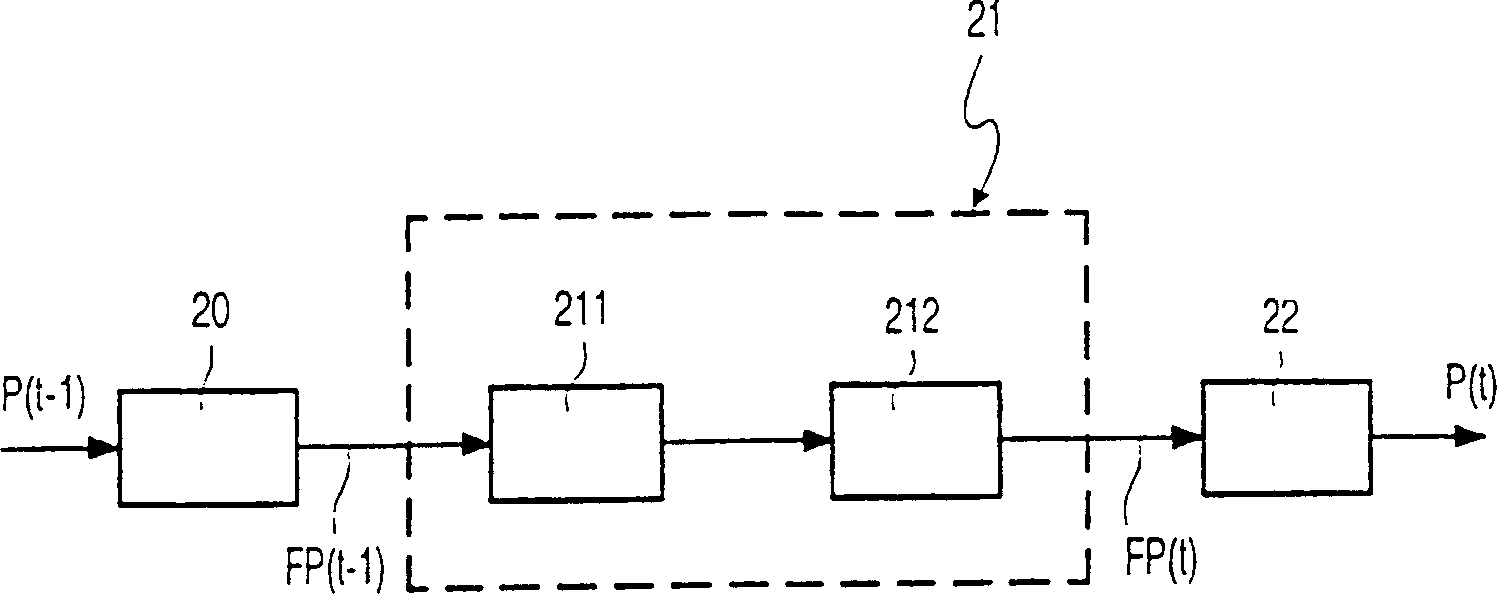Image segmentation and object tracking method and corresponding system
An object tracking and image technology, applied in image analysis, image enhancement, image communication, etc., can solve the problems of not being able to track, not being able to track objects, not being able to provide motion information, etc.
- Summary
- Abstract
- Description
- Claims
- Application Information
AI Technical Summary
Problems solved by technology
Method used
Image
Examples
Embodiment Construction
[0051] as figure 2 As shown, in terms of the main steps of the previously mentioned dual-partition method, more precisely, the special technology involved in the present invention will be used for the projection step from the subdivision FP(t-1) to the current image, in Fig. Represented by reference number 21 (the said subdivision is the result of the previous image partition P(t-1) re-dividing 20), its purpose is to first obtain the subdivision PFP (t) after projection, and then Next the partition P(t) is obtained after the relabeled step 22 . In order to increase the temporal stability, it is necessary to improve the projection step for accommodating the partition P(t-1) of the previous image I(t-1) within the information of the current image I(t). as figure 2 As shown, the implementation of this improved projection step can be divided into two sub-steps 211 and 212: a label projection sub-step and a partition generation sub-step.
[0052] The marker projection uses the...
PUM
 Login to View More
Login to View More Abstract
Description
Claims
Application Information
 Login to View More
Login to View More - R&D
- Intellectual Property
- Life Sciences
- Materials
- Tech Scout
- Unparalleled Data Quality
- Higher Quality Content
- 60% Fewer Hallucinations
Browse by: Latest US Patents, China's latest patents, Technical Efficacy Thesaurus, Application Domain, Technology Topic, Popular Technical Reports.
© 2025 PatSnap. All rights reserved.Legal|Privacy policy|Modern Slavery Act Transparency Statement|Sitemap|About US| Contact US: help@patsnap.com



